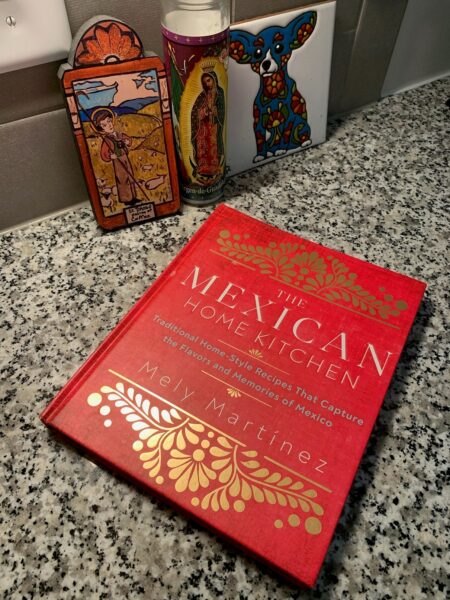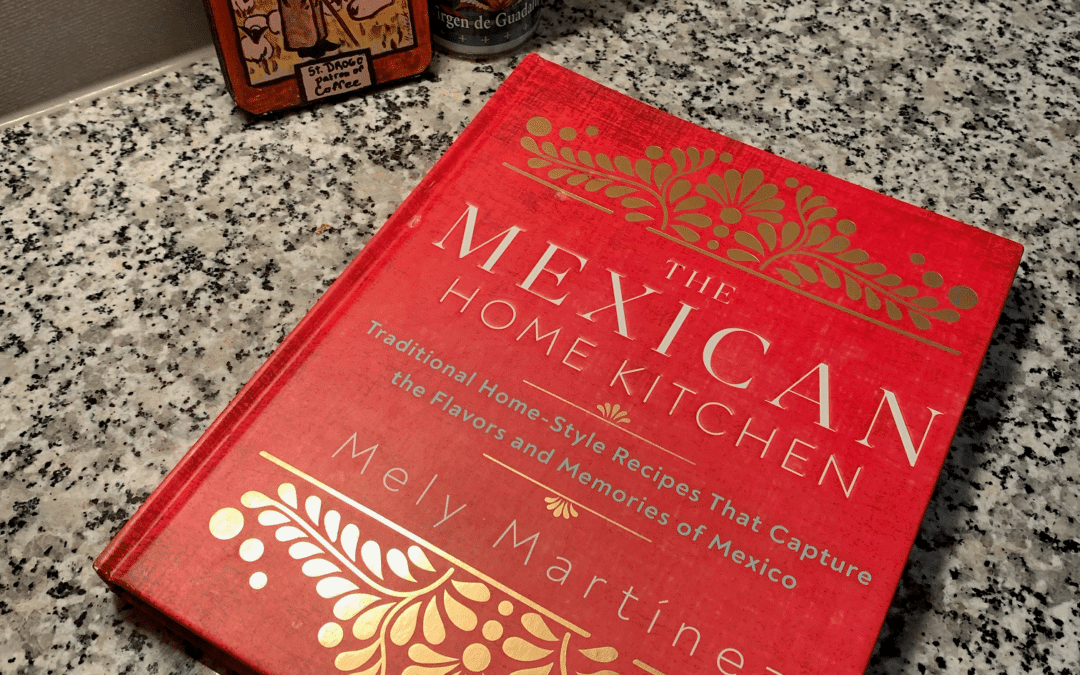By Maggie Phillips
Guest Blogger
Well, it’s that time of year again. That’s right, it’s Hispanic Heritage Month! Haven’t you been counting down on your Hispanic Heritage Month Advent calendar?
Just kidding. I’ll be honest, I had to look it up, myself.
For me, it always raises some interesting questions about my own Hispanic heritage. My grandmother was Mexican, which means I’m lucky enough to have a big Mexican family in El Paso, and I grew up hearing older ladies call me “mija.” On the other hand, my cousin had to send me a Mexican cookbook so we could both learn how to make authentic dishes from scratch.
I don’t speak Spanish, although I took it for a couple of years in high school from a teacher who was originally from Castile, Spain. That meant the dialect I was learning, with the lisping “th” instead of the “s” sound in certain places, would have definitely set me apart if I tried to order in Spanish at Avila’s.
Like many of my friends who, like me, have mixed (usually Anglo) and Hispanic heritage, answering ethnicity questions on surveys, applications, and other types of paperwork is always fraught. Do I “count” as Hispanic or not? After all, I’m only a quarter Mexican. On the other hand, not to mark Hispanic seems like erasing a crucial, colorful part of my story.

It doesn’t matter in the grand scheme of things, I suppose. But we still collect census data that aggregates information about different races in America. Political pollsters still group people by ethnicity to extrapolate how they might vote or which issues they care about. Any time I hear the news mention Hispanic voters, I wonder how many people responding are like me? Kind of Hispanic, but kind of something else. Since this is America, my guess is, probably quite a few of them.
For me, the question of how to reconcile the many different cultural identities I’ve inherited came when I actually made a recipe from the Mexican cookbook my cousin sent. It was chicken mole, slow-cooked chicken smothered with a smoky, savory, chocolate-y sauce.
The recipe promised a half hour. But there were a lot of preliminaries to work out, so it maybe took me a half hour just to prep all the ingredients. However, slowly everything started to come together.
Then, out of nowhere, I was transported suddenly back in time. The smell hit me and I was taken to afternoons at the house of my mother’s grandmother. She used to make mole for us when we’d come to visit her, when I was perhaps four or five years old. Although I had likely not smelled or tasted homemade mole in over 20 years, when I held my cooking spoon up to my lips for a taste, I laughed out loud.
Yes, this is how I remembered it, beyond a doubt!
It was this experience that helped me understand why I would always claim Hispanic heritage, despite not being the most culturally knowledgeable, or even speaking Spanish. Speaking up about my Mexican ancestry matters because the story of the little old woman who used to make mole for me and my family matters. She was born in Mexico, and came over as a young girl to escape a dangerous life for her and her family. The story of her daughters, who went to school, worked, and raised families in this country matter. It matters because where we come from matters.
In the final analysis, my heritage isn’t finally about me, and whether I can meet an arbitrary set of standards to qualify for membership in a census category. Heritage is about being a part of something bigger than yourself, of being shaped by something that is the product of generations of experience and (hopefully) wisdom. It’s not about how I define my own personal heritage, but how the men and women who have gone before me have formed me, and through me, future generations.
Recipe: Mole Poblano
Taken from The Mexican Home Kitchen by Mely Martínez
Ingredients
- Slow-cooked chicken
- 4 ancho peppers
- 4 cups chicken broth or water
- ¼ tsp coriander seeds
- ¾ cup sesame seeds
- ½ cup vegetable oil or lard, divided
- 2 medium tomatoes
- ½ medium white onion, sliced ¼ inch thick
- 3 small slices bread (i.e. a baguette or Mexican bolillo)
- Salt, to taste

How to Make It:
- Prep your ingredients. Slicing the peppers with kitchen scissors to get the seeds and veins out and then flattening them is recommended before toasting. Keep 1 tablespoon of seeds for the sauce.
- Simmer your chicken broth so you can soak all your ingredients after toasting/frying.
- Toast peppers a few at a time on both sides in a large skillet, around 30-40 seconds. Press down on them as you turn them. They’ll release their aroma quickly but don’t let them burn!
- Add toasted peppers as you go, then add the chocolate to the broth.
- Next, toast your seeds: the reserved pepper seeds, coriander, anise, and sesame seeds, as well as the whole cloves and peppercorns, each ingredient toasted separately, then added to the simmering chicken broth (keep 2 tablespoons of sesame seeds off to the side for a garnish).
- Next, you’ll heat your oil or lard in a skillet to fry separately the raisins until plump, pumpkin seeds until they swell (but not before they explode!), peanuts to a golden color, and the almonds until well-browned.
- Draining any excess fat, add your toasted ingredients to the broth along with the cinnamon stick.
- Fry the tomatoes and roast the garlic cloves in the skillet (you can roast or fry either), before adding the tomatoes and peeled garlic to the broth.
- Fry the onion to a golden brown color, then the tortilla and bread until they are crisp and golden brown before adding to the broth. Be careful to add just a little oil/lard as you go to keep the tortilla and bread from absorbing them.
- Fry your plantain until golden, then drain with a slotted spoon to transfer to the broth
- Once everything has been added to the broth, process the soaked ingredients in a blender. Then, add a ½ cup of chicken broth to the blender at a time, blending well until everything is gradually blended into a fine paste. Don’t add too much liquid unless your blender needs the help. You’ll want to keep freeing up the blades with a rubber spatula to prevent it getting stuck. You might need to do a few batches to make sure everything is evenly pureed.
- Blend until the entire mixture has a smooth texture (you can put it through a strainer if it’s still coarse).
- Finally, add 2 more tablespoons of oil/lard to a large pot or Dutch oven. At medium heat, add your mole sauce, using a wooden spoon to scrape the bottom of the pan frequently to prevent sticking. Season with salt to taste.
- Stir constantly over low heat, 12-15 minutes. The sauce will become thick and darker in color, bubbling and spluttering. You’ll notice pools of oil form on the surface.
- Add chicken and heat through in the mole sauce.
- Serve over rice with tortillas and rice with your extra toasted sesame seeds for garnish!

About Maggie Phillips
Maggie is an Army spouse and mom of three. She writes for Tablet magazine as part of a grant from the Arthur Vining Davis Foundation to increase religious literacy. Her work has appeared in The Leaven, the newspaper for the Archdiocese of Kansas City, Army magazine, NextGen MilSpouse, Military Mom Collective, Military Spouse magazine online, and elsewhere. When she can get a babysitter, Maggie also does stand-up comedy, a subsidized hobby that usually just about pays for the babysitter. Follow her on Instagram at @maggies_words, on Twitter at @maggiemphillips, and at mrsmaggiephillips.com. Opinions her own.



